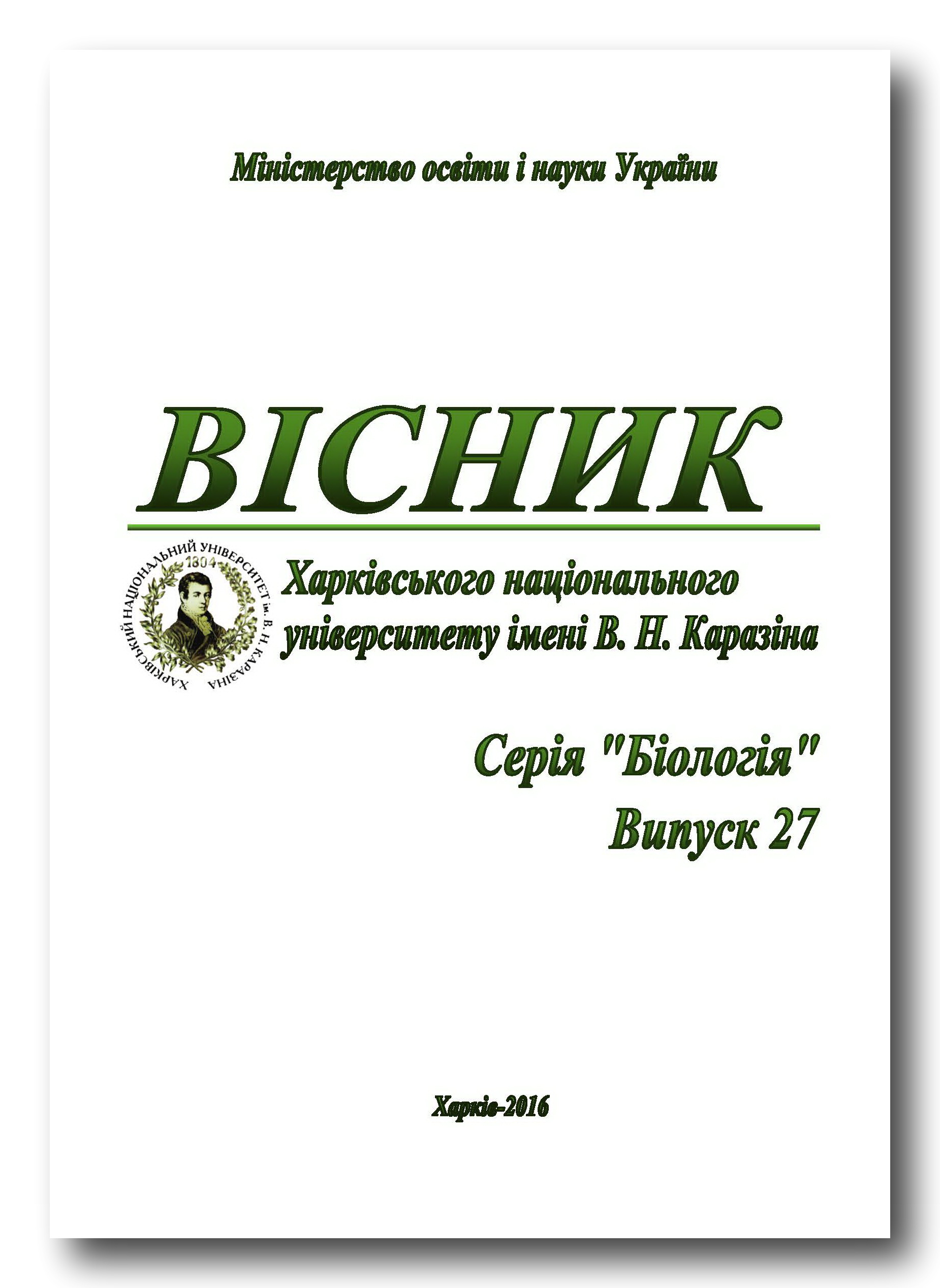Impact of physiological amount of E. coli on the efficiency of stallion semen cryopreservation
Abstract
The biological effect of the absolute number of colony forming units of coliform bacteria and the total number of saprophytic bacteria in the semen of the sires of Ukrainian selection on its physiological parameters before and after cryopreservation has been studied for the first time. It has been found out for the first time that the correlation coefficient of the number of coliform bacteria in the native semen with the thawed semen mobility is –0,54 (p<0.01), with the semen survival at 37°C –0,54 (p<0,01). The total number of saprophytic bacteria in the semen had significantly less impact on the biological indicators of the thawed semen than E. coli and the correlation coefficient of the total number of saprophytic bacteria in the semen with the mobility of the thawed semen was only –0.17 (p<0.01) and with the survival of semen only –0.2 (p<0.01). The data obtained have proved for the first time that the examined breeds of the Ukrainian selection have different maximum permissible level of the number of colony forming units of E. coli in the semen. Therefore, not only the coli-titer and the total number of saprophytic bacteria but the absolute number of colony forming units of E.coli bacteria should be determined in the semen of stallions.
Downloads
References
Ткачёв А.В. Влияние иммуногенетических факторов на эффективность искусственного осеменения и естественной случки лошадей на Украине // Фундаментальные исследования. – 2013a. – №10 (2). – С. 371–374. /Tkachev A.V. Vliyaniye immunogeneticheskikh faktorov na effektivnost' iskusstvennogo osemeneniya i yestestvennoy sluchki loshadey na Ukraine // Fundamental'nyye issledovaniya. – 2013a. – №10(2). – S. 371–374./
Ткачёв А.В. Эффективность искусственного осеменения лошадей в зависимости от степени повреждения мембран сперматозоидов // Фундаментальные исследования. – 2013b. – №10 (1). – С. 145–148. /Tkachev A.V. Effektivnost' iskustvennogo osemeneniya loshadey v zavisimosti ot stepeni povrezhdeniya membran spermatozoidov // Fundamental'nyye issledovaniya. – 2013b. – №10(2). – S. 145–148./
Ткачёв А.В. Влияние допустимых концентраций микотоксинов корма на резистентность и контаминацию спермы жеребцов–производителей в Украине // Животноводство и ветеринарная медицина. – 2014a. – №3 (14). – С. 3–7. /Tkachеv A.V. Vliyaniye dopustimykh kontsentratsiy mikotoksinov korma na rezistentnost' i kontaminatsiyu spermy zherebtsov–proizvoditeley v Ukraine // Zhivotnovodstvo i veterinarnaya meditsina. – 2014a. – №3(14). – С. 3–7./
Ткачёв А.В. Гормональный фон жеребцов под влиянием максимально допустимых уровней микотоксинов корма в Украине // Вестник Новосибирского государственного аграрного университета. – 2014b. – №4 (33). – С. 115–119. /Tkachev A.V. Gormonal'nyy fon zherebtsov pod vliyaniyem maksimal'no dopustimykh urovney mikotoksinov korma v Ukraine // Vestnik Novosibirskogo gosudarstvennogo agrarnogo universiteta. – 2014. – №4(33). – S. 115–119./
Ткачёв А.В. Цитогенетический статус жеребцов под влиянием допустимых уровней микотоксинов корма // Молекулярная и прикладная генетика. – 2015a. – №19. – С. 79–84. /Tkachev A.V. Tsitogeneticheskiy status zherebtsov pod vliyaniyem dopustimykh urovney mikotoksinov korma // Molekulyarnaya i prikladnaya genetika. – 2015a. – №19. – S. 79–84./
Ткачёв А.В. Эффективность искусственного осеменения кобыл в зависимости от схем санации жеребцов перед получением спермы // Вестник Новосибирского государственного аграрного университета. – 2015b. – №4(37). – С. 95–101. /Tkachev A.V. Effektivnost' iskusstvennogo osemeneniya kobyl v zavisimosti ot skhem sanatsii zherebtsov pered polucheniyem spermy // Vestnik Novosibirskogo gosudarstvennogo agrarnogo universiteta. – 2015b. – №4(37). – S. 95–101./
Ткачов О.В., Калашников В.О., Сушко О.Б. Бактеріальна забрудненість сперми жеребців–плідників на різних біотехнологічних етапах кріоконсервування // Науково–технічний бюлетень Інституту тваринництва НААН. – Харків, 2011. – №104. – С.208–212. /Tkachev A.V., Kalashnikov V.O., Sushko O.B. Bakterіal'na zabrudnenіst' spermy zherebtsіv–plіdnykіv na rіznykh bіotekhnologіchnykh etapakh krіokonservuvannya // Naukovo–tekhnіchnyy byuleten' Іnstytutu tvarynnytstva NAAN. – Kharkіv, 2011. – № 104. – S. 208 – 212./
Casey P.J., Gravance J.C., Davis R.O. Morphometric differences in sperm head dimensions of fertile and subfertile stallions // Theriogenology. – 1997. – No 47. – Р. 575–582.
Graham J.K. Cryopreservation of stallion semen and its relation to fertility // Vet. Clin. North Am. Equine Pract. – 1996. – No 12. – Р. 119–130.
Magistrini M., Vidament M., Clement F. Fertility prediction in stallions // Anim. Reprod. Sci. – 1996. – No 42. – Р. 181–188.
Filannino A., Stout T., Gadella B.M. Dose-response effects of estrogenic mycotoxins (zearalenone, alpha- and beta-zearalenol) on motility, hyperactivation and the acrosome reaction of stallion sperm // Reproductive Biology and Endocrinology. – 2011. – No 9. – Р. 134–140.
Katila T. In Vitro evaluation of frozen-thawed stallion semen: a review // Acta vet. Scand. – 2001. – No 42. – Р. 199–217.
López-Fernández C., Crespo F., Arroyo F. Dynamics of sperm DNA fragmentation in domestic animals II. The stallion // Theriogenology. – 2007. – No 68(9). – Р. 1240–1250.
Mottershead J. Frozen semen preparation and use. Part 1. // Canadian Morgan Magazine. – 2000. – Nov/Dec. – Р. 32–43.
Authors retain copyright of their work and grant the journal the right of its first publication under the terms of the Creative Commons Attribution License 4.0 International (CC BY 4.0), that allows others to share the work with an acknowledgement of the work's authorship.




